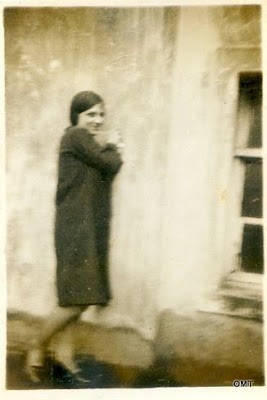Passport and other ID photos
“I loathe my own face.”
Francis Bacon
Here’s something you can think about in a quiet moment: is there anyone alive right now who hasn’t been photographed? Deep in the Amazon there are tribes that have had little contact with the outside world but we know about some of them because we’ve seen photographs of groups of villagers taken from helicopters or else anthropologists have managed some furtive snaps. There are groups like the Amish who reject modern technology but in order to live in the US they need to have their identities recorded somewhere and that involves a camera. Billions of people around the world have access to cameras but when it comes to documenting citizens, states have vested interests in seeing everyone photographed. Take a country like North Korea where it’s likely very few people own cameras; the government has doubtlessly made sure that every citizen has been thoroughly documented. As a rule of thumb; the more authoritarian the state, the more photographs it has on file of its citizens. In Turkey a few years ago, any foreigner applying for a residence permit had to submit 16 photographs that were then distributed to various ministries. Today 4 is sufficient, which doesn’t mean the state has become less vigilant, rather its bureaucracy has become more streamlined.
The realization that photography was useful to the state for monitoring citizens occurred pretty much immediately the collodion process was invented and photographs could be reproduced ad infinitum. There are accounts from the early 1860s of police departments in the US photographing everyone they had arrested. This was for identification only and only for local use. Transmitting photographic records of felons to other police departments was either impractical or unnecessary and the images could not yet be reproduced on posters. Still, it’s interesting (maybe not surprising) that the first people considered for this type of documentation were those perceived to be enemies of the state. It shows that the camera was always perceived to be an authoritarian’s tool.
In 1863 a Manchester man, a Mr McLachlan, wrote to the English papers with a proposition. Every photographic studio in the UK should photograph every notable citizen and submit the results to the National Portrait Gallery. The NPG had opened in 1856 and Mr McLachlan’s idea was that to be a genuine portrait gallery it needed to be a storehouse of the nation’s identity, not simply a repository of fine art. The NPG didn’t take up McLachlan’s idea though over a century and a half it has become something like what he envisioned. There are very few notables from the era who don’t have a CDV in the collection though quite a few studios are missing.
In 1871 London’s police department wanted every criminal arrested to be photographed. Some what had a bit of previous were clever enough to take the issue to the courts and convinced a few magistrates that a man’s portrait was his personal property so they ought not sit in front of a camera until they had at least been convicted. It is probably thanks to them that in most countries now people aren’t photographed until they have been formally charged.
If you think the fax is an invention from the 1970s you are out by about 100 years. In December 1876 Police in Lyons transmitted a photographic image of a wanted man to Paris. As the man alighted from his train gendarmes holding a paper copy of his portrait moved in an arrested him. From about the same time – dates need to be confirmed – an American journalist attended a prizefight in Paris and like everyone else was asked to present his photo as proof of ID. Incidentally there is a whole other history of the display of photographs of executed criminals, not so the public could identify them of course but so their extinction could be celebrated.
For a lot of people a trip to the studio for an obligatory passport photo is no light matter. Considering the sole purpose of the portrait is to provide a reasonable likeness for identification purposes, taking time to apply make up, choose the right outfit and attend to the hair – especially that – the time spent can seem excessive. Then again, there are people haunted by their passport photo. They cringe when they hand the document over to the customs official, strangely unaware that if they look that hideous in an instant photo they probably don’t in real life. Fortunately, in Turkey photographers are an understanding lot. The studio always has a small table with a comb, a mirror and a few small items to patch up any potential mistakes. The photographers are always considerate and give the subject a couple of minutes to prepare themselves.
 |
| IDENTITY PORTRAITS 2 |




























